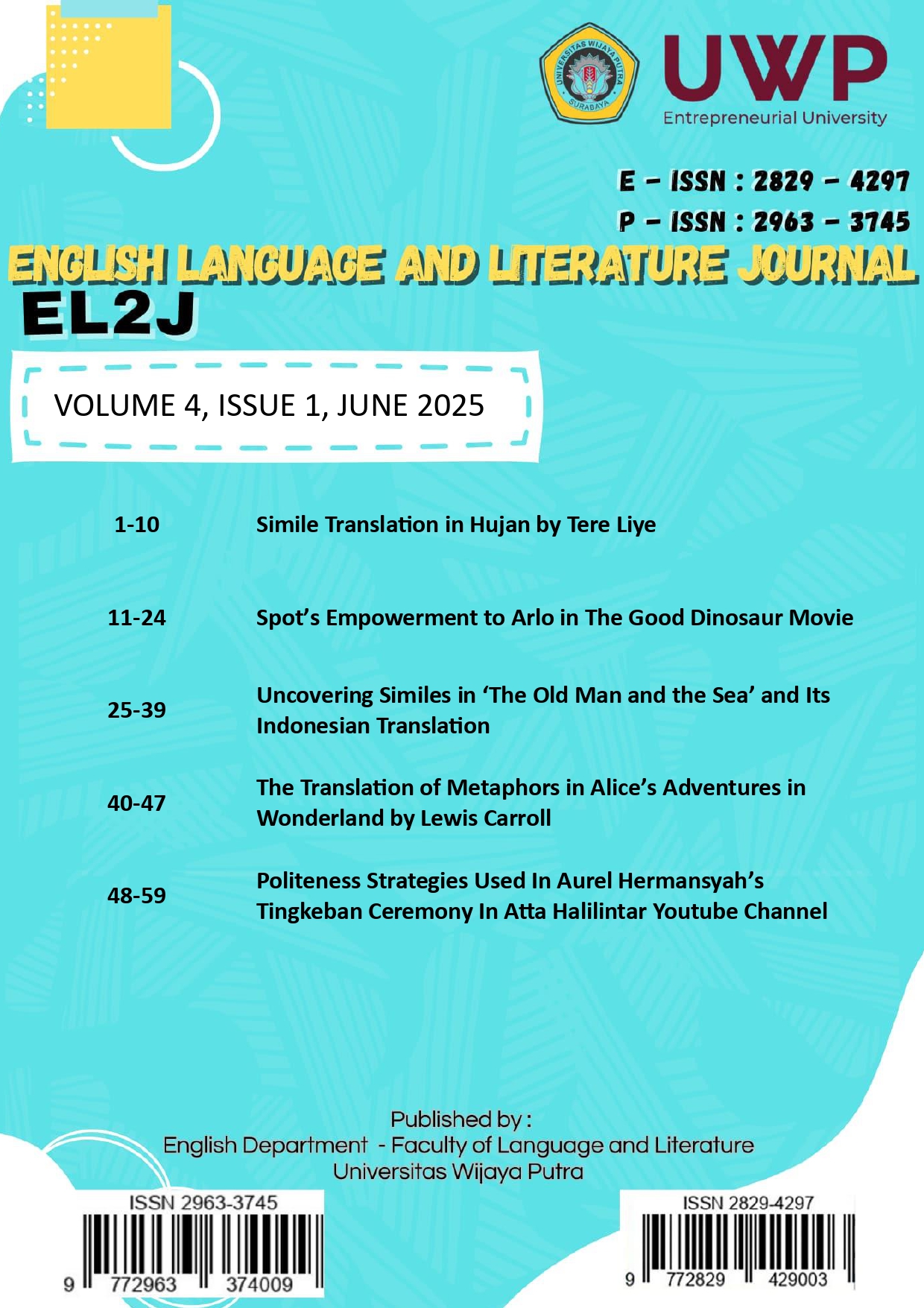Uncovering Similes in 'The Old Man and the Sea' and Its Indonesian Translation
Abstract
This study discusses the translation of similes in Hemingway's The Old Man and the Sea and its Indonesian version, Lelaki Tua dan Laut by Sapardi Djoko Damono. It identifies similes in the novel and analyzes the translation strategies used, focusing how these strategies affect the conveyed meaning. This study employs a qualitative descriptive method to analyze simile translation strategies based on Pierini’s framework, i.e. (1) literal translation, (2) replacement of the vehicle with a different vehicle, (3) reduction of the simile, idiomatic, to its sense, (4) retention of the same vehicle plus explicitation of similarity feature(s), (5) replacement of the vehicle with a gloss, and (6) omission of the simile. The data consists of similes from The Old Man and the Sea by Ernest Hemingway that was published in 1952 and Lelaki Tua dan Laut, translated by Sapardi Djoko Damono (1979). Literal translation is the most commonly used strategy, preserving the original structure and meaning, while explicitation and replacement of the vehicle with a different vehicle help improve clarity and cultural relevance. Some similes undergo reduction for simplicity, and while replacement of the vehicle with a gloss provides additional explanation for better comprehension. Omission is the least used strategy, showing the translator’s effort to retain figurative meaning. While many similes maintain their literary and figurative impact, some modifications result in shifts in meaning. This study highlights the challenges of translating literary devices while balancing linguistic and cultural adaptation.




